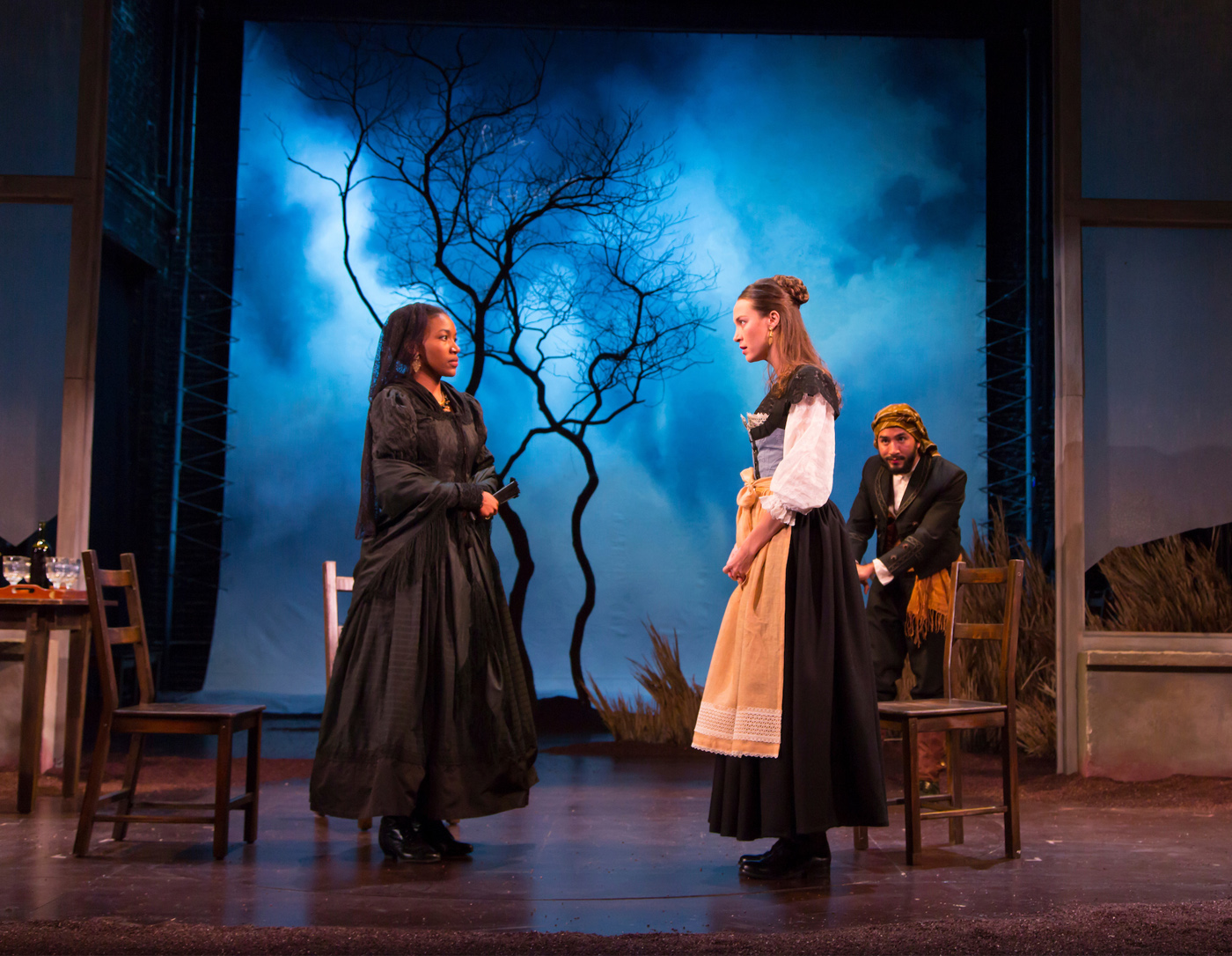
Courtesy of T. Charles Erickson
As the stage goes dark during the first act, and all one can see is shadows moving the sets, the theater fills with the sounds of traditional Spanish guitar music. Federico García Lorca’s “Blood Wedding,” or at least its first act, is musical and rhythmical: the dances, clacks and details capture the viewers’ attention fully. “[The play] is Lorca’s cante jondo: a deep song of beauty and sorrow sung by the voice of his people,” says Josh Goulding DRA ’17, the production’s dramaturge.
The play tells, as the title promises, the story of a blood wedding. It is set in early 20th-century Spain, where the bride, despite her engagement to one man, loves another: Leonardo, who is married to her cousin and whose family murdered the father and brother of her fiancé long ago. After her wedding, the bride runs off with Leonardo, provoking a forest manhunt that concludes when the bride’s two suitors murder each other.
The looming death of the two characters can be almost felt throughout the play. Leonardo never appears without a red accessory as if knowledgeable of his “bloody” future; the mother of the groom wears exclusively black as if she is already in mourning; and even the lullaby Leonardo’s wife sings to their baby foreshadows the play’s gruesome end.
The viewer can also quite physically see the true affections of the bride and, even without considering the title, guess that the wedding will not end well. The bride never allows the groom to be less than a few feet away from her, and when he finally touches her after the wedding, she screams, “Get off!” and runs away. In contrast, whenever she is in the company of Leonardo, there is no visible space between the two.
Nahuel Telleria’s DRA ’25 new translation, made specifically for this production, also helps keep the viewer engaged and attentive. Despite the costumes and props evoking the early 20th century, the tone of the new translation is incredibly modern. If the viewers closed their eyes at the very beginning of the play, it would probably be impossible to tell which era the production was set in. The play then seems almost modern and relevant to the present day. When the mother of the groom condemns the man who created knives, rifles and other murder weapons, the viewer cannot help but see a present-day mother whose child has perished in a war, a fight or even at the hands of a policeman.
The second act of the production, however, is perplexing and detracts from the realism of the first act. Lorca’s mythical elements — such as the introduction of death and the moon as characters — inspired this production to incorporate even more of their own. The lumberjacks that are supposed to appear at the very beginning of the act are replaced by three women in white cloaks, which are later revealed to be covered in blood at the bottom, and the two women who are supposed to metaphorically represent the death of the main characters by unweaving a ball of red yarn are replaced by three actresses unweaving two balls of yarn. This is an allusion to the moirai — Greek deities, usually represented as a group of three women, controlling the thread of life of every mortal from their first breaths until death. Other incongruities present themselves, such as when the moon leaves the stage to a tune of ominous, almost hard rock, guitar riffs. The combination of all these innovations left viewers confused — lost in the sudden blackouts, rock guitar riffs and mythological allusions.
Nevertheless, the last scene grounds the play in reality again. The groom’s mother and other women of the village mourn the death of the two men, and the bride emerges dressed in red. She wants to die, but the mother sees no point in killing her. The bride asks for permission to mourn the death of her beloved with the women. The mother allows her to do so, though only if she stands by the door. Lorca’s “song” ends on a tragic note, leaving it to viewers’ discretion whether to truly blame the bride for her passion for another man, and reminding them of their own mortality.
“Blood Wedding” was presented by the Yale School of Drama from Oct. 18–22.







